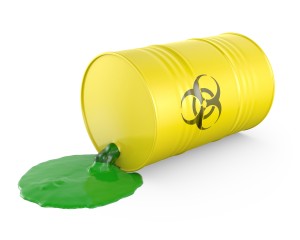All living things produce wastes, be it solids, liquids or gases as a by-product of life processes. Did you know that common, undesirable intestinal micro-organisms such as yeast (candida albicans, for one) produce an array of toxins that are poisonous the nervous system?
Here are a few :
1. Carbon monoxide. We all know that inhalation of this gas, in concentration, is fatal. Why? Because it binds to hemoglobin and prevents oxygen uptake. While extremely unlikely that common strains of yeast found in the bowel can produce this concentration of CO , a yeast overgrowth has been associated with ‘brain fog’, confusion, slow mental processes, anxiety, depression and  other cognitive problems.
other cognitive problems.
2. Acetaldehyde: This is a metabolic by-product of yeast that acts like alcohol. That is, it can result in impaired cognition. Interesting, its cousin, formaldehyde is a biological poison, used as a preservative (to prevent undesirable bacterial growth in laboratory tissue samples, for instance). If you react negatively to the fumes from a new carpet, new furniture or clothing, your tolerance for aldehydes is low and your liver could use some help.
3. Gliotoxin: This yeast and fungal by-product is especially toxic to the liver, your body’s central processing centre for metabolic wastes. Gliotoxins also damage immune cells needed to combat yeast so it doesn’t become a warlord and hijack the immune system.
 4. Ammonia: This toxic ingredient is found in window-cleaner. It is very poisonous to the kidneys. It’s also a product of the damage yeast cause when they grow on your intestinal lining. The ammonia that results from the protein breakdown is used in the yeast’s favour, as they use it to communicate (remember, these are one-celled organisms but they are very, very ‘smart’).
4. Ammonia: This toxic ingredient is found in window-cleaner. It is very poisonous to the kidneys. It’s also a product of the damage yeast cause when they grow on your intestinal lining. The ammonia that results from the protein breakdown is used in the yeast’s favour, as they use it to communicate (remember, these are one-celled organisms but they are very, very ‘smart’).
Who knew that there could be toxic chemical factory in your gut that could be affecting your health ? If you’re wondering if candida overgrowth is part of your health problems, check out the Dysbiosis questionnaire. If your score is elevated, you may benefit from my Digestive Rejuvenation Program.
What does all this have to do with nutrition? The answer is, what we eat determines what microbes take up residence in our guts, and what kind of neighbourhood it is. Junk food breeds yeasts and disease-causing bacteria, while real food promotes health-giving microbes. So start taking a look at your diet and ask yourself if it could use a tune-up.
